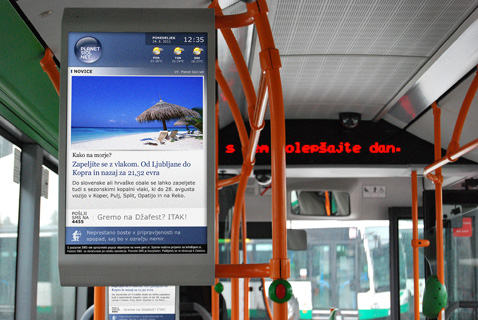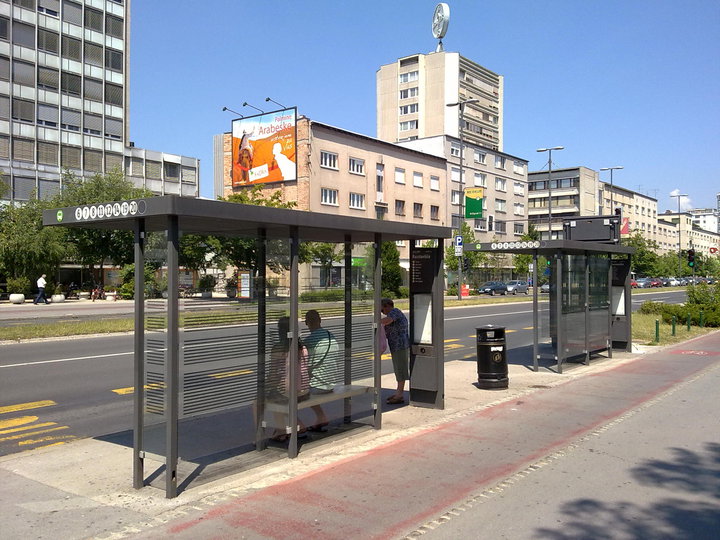Change the world
In the last few months, nothing matches the number of times I’ve seen the “change the world” goal being tied to the entrepreneurial world. From very positive to utterly dysfunctional examples, the paradigm that entrepreneurs should/want/try to change the world made me think about the whole perspective and try to understand the underlying expectations and implication that “pressure” has on all entrepreneurs.
I’ve seen many projects be born, grow and then die even before they reach legal age (a.k.a. positive cashflow). Ideas behind those projects were good and really bad. The one thing that made me think about the goals, wishes and points of those ideas is how they impact everyday life. If I take for example Twitter, the idea is to enhance everyday communication – something we all do everyday and use various methods to achieve. Skype? Same thing. They both impact our everyday life by enhancing the experience of it.
The bad
But then there are ideas that have no life-enhancing value (or added value). For example, a company called Prumaro created Gem, the public multimedia, and installed a number of LCD displays on city buses in Ljubljana. Those displays presented news, weather, SMS messages and commercials. The 2-4 displays in each bus were in sync showing the same content all the time.
While I understand that installing LCD displays and presenting “live” content has some kind of “wow” effect and presents some type of enhancement to the ride a passenger takes, it has no real added value to the service as a whole. To add to the perspective, all city buses in Ljubljana are part of a large fleet management system that allows drivers to stick to their timetable and exactly follow the bus driving on the same line ahead and behind them. At the same time, this allows users to find out when buses arrive at a station with minutes notice.
In a city where you can get stuck on a bus stop for 20 minutes waiting for a bus just to see two of them arrive at the same time, the timetable and enhancement of the ride presents a great deal of added value to the passenger. This particular problem was tackled with the addition of arrival timetables to all major bus stops in the city.
The ugly
But you know, buying an LCD screen and installing it in a bus and showing some content does not mean you created added value. As neither putting timetable displays on bus stops is.
The picture above portraits a major bus stop in Ljubljana. The bus shelter on the right has a timetable display on the roof, facing the grass, as if passengers wait there for their ride. This was the first of 3 steps taken in order to find the right position of that display on that station. The bottom line of this picture is to show that just buying the stuff and installing it does not add any value on its own. Even the final position of that display (moved to the other side of that roof and rotated to face left) is completely useless for most passengers, who have to move around and search for the display.

To return to the LCD displays example and find the added value, we have to ask the following question: what is the value of those displays while I’m on the bus? The answer is: entertainment. The displays don’t enhance the public service experience, they just provide entertainment while using the service.
This brings me to the main reason many start-ups are doomed even before they start developing their idea. Both examples shown here are broken at heart. One (LCDs) has no meaning, while the other is forced in the environment.
The good
Lets forget for a moment that the four components in the examples above are separate legal entities (owners of bus shelters, busses, arrival timetables and LCD displays), and try to put all those pieces in a natural environment with added value to the public service.
First of all, the bus shelters have integrated advertising space. That space should be used by a public transport information system combined with advertising. The system would show arrival times and other info (delays, line changes, weather updates), providing actual added value to the environment. This would also eliminate the need for a timetable on the roof.
Next we would keep the LCD displays in the buses and most of the content on them. But when a bus is about to approach a stop, the display would show a timetable of buses arriving to the same station after our bus and to the station across the street. We would also show line updates with graphics and even traffic info on lines that drive to Park+Ride stops. Small change, great impact.
Is all of this technically possible? Yes, all info is available and can be easily integrated in existing software or services. Is it expensive? Relatively not. The most expensive updates are the LCD screens on bus shelters. Combined with added advertising value, I’m sure the business model would cope with such an investment.
The conclusion
The examples I’ve took are great in two ways. They show how much can be achieved when there is will to improve, but also how much can be missed by not taking the opportunity in its entirety. Those are examples nobody should be proud of because they were installed not to enhance the environment, but just to be installed and present. They achieved a goal, a goal that was not to improve anything.
When you have an idea, ask yourself what kind of impact it could have on everyday life. When you think your app will help people do something, ask yourself if that problem is of such magnitude that it needs a standalone app requiring 5 minutes of user time to reach an answer. Or if your product creates new problems because of your approach.
Ideas are worth nothing, and everything. The environment you install them in makes the real value. You will not change the world by creating new problems when solving old ones. To change the world, you have to enhance life, get under the skin and provide your value to the whole.
Changing the world is not measured by the number of appearances in Wired or Techcrunch. It is measured by the impact of your products in everyday life.
